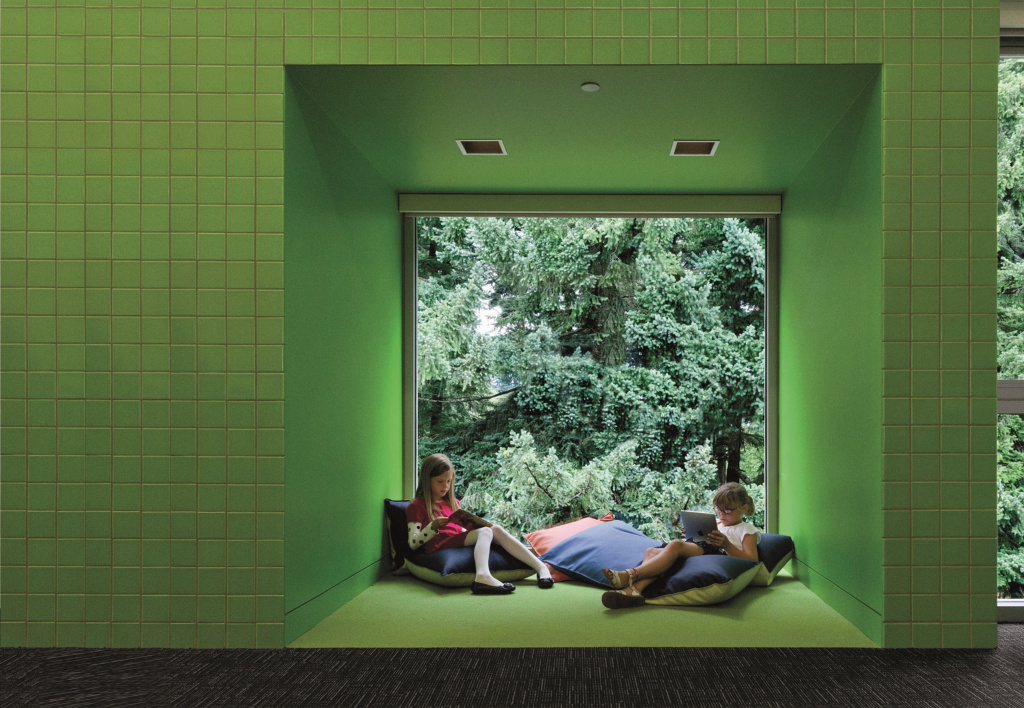
A4LE has around 4,500 members spread across the world, with formal partner organisations in Australasia as well as the UK (here in the UK, the organisation was previously known as UK Learning but has since adopted the A4LE brand, too) all with the same goal – in their words, “building healthy, safe, resilient and sustainable 21st Century learning places that inspire transformation in education, enhance student and teacher performance, and support culture and community vitality”. And as the official A4LE publication in the UK, Learning Spaces magazine sees its role as supporting that mission by celebrating and sharing the best projects, worldwide. “It’s an exciting time for us,” commented David Schrader, Chair of the A4LE Board of Directors. “This organisation is moving ahead quickly and is being recognised globally, which is important to us.”
“We make a difference,” explained one of the UK Executive Directors, Terry White, “because we believe that by keeping the learner at the heart of the design process (through effective dialogue, collaborative enquiry, research, professional stakeholder debate) we will create innovatory environments for learning, resulting in improved outcomes for all learners.” A4LE believes that professional collaboration – the sharing of innovation and practice that makes a difference – will promote local, national and international learning-led design solutions. It recognises that it is the quality of the approach to learning and teaching, and the strength and the value placed on the relationships between students, staff and the learning community, that are central to the organisation and sustainability of successful schools.
From across its regions, A4LE brings together teachers, educators, design professionals and researchers who value the importance of improving learning opportunities and life chances for young people. It believes this is the best way to develop effective, sustainable and stimulating educational facilities for the future. The current and future learning needs of young people are at the heart of this approach: each year, A4LE promotes the engagement of young people in debating how to make learning personal for them as well as engaging them in the design of environments that will liberate their learning. Learners have the opportunity to attend regional and national conferences. Last October, the most recent ‘Schools Next’ international design competition was again held at A4LE’s annual International Conference, in Philadelphia, where IPACA (there’ll be a full case study in the next issue) was a finalist.
A4LE UK believes:
- in advocacy on behalf of all learners.
- that learner and consumer dialogue should drive the design process.
- that learners and teachers facilitate change for future learning.
- in inclusive and collaborative planning processes.
- that facilities have a direct impact on learning.
- that quality and innovation can be created in the current economic climate.
- in diversity of professional and global perspectives.
- that technology is central to enable, motivate and inspire all aspects of future learning.
- that research and evidence based activity are essential to inform the design of learning spaces.
- that successful innovation and change is taking place in learning environments and that it needs to be shared.
“Our current economic climate demands that we must examine carefully how best to deploy the levels of funding available for the much needed investment in our school facilities,” continued Terry, “so A4LE believes there is a need to promote an informed and engaged debate to celebrate the innovation within the design of learning environments that is currently being achieved. The challenge must be to ensure that the design process gives value over time. The design process needs to ensure that it is the critical vision, pedagogy and organisational culture that a school may wish to create to meet its current and future learning needs, which drives the design-delivery process. The purpose of this approach is to provide world class learning environments where all students thrive”.
It is self-evident that greater recognition needs to be given to the extensive research and good practice that has now been developed within the UK and internationally. This demonstrates the importance of translating vision, values and an organisational approach, into learning and teaching outcomes. This background work and understanding is crucial to designing effective learning spaces. Through our features and reports within this magazine, we represent a diverse community of professionals who experience and participate in the organisation, design and delivery of learning spaces. Our aims are entirely consistent.